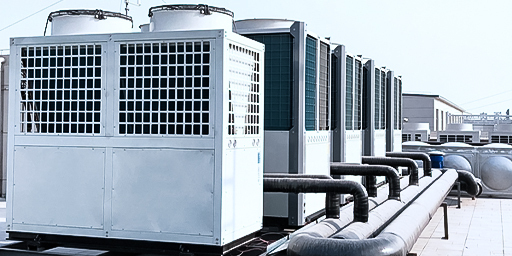Analysis of Air Energy Heat Pump
The technology adopted by the air source heat pump is an energy substitute that the world pays special attention to, and it is also one of the pure, green, and cost-effective heating methods after coal combustion, boiler oil, and water heater power consumption. In many developed countries in Europe and the United States, air source heat pumps as a clean technology have long been known and widely used. It entered China at the end of the 20th century. With its obvious comprehensive advantages such as energy saving and high efficiency, it has spread rapidly. Energy saving and emission reduction have long been the main theme of the progress of the times. It is our duty to save non-renewable energy and implement operable low-carbon.
1. Heat pump working theory
The technology adopted by the heat pump is the inverse process principle of the Carnot cycle, which transfers and transfers the free renewable heat energy in the atmosphere to the water through limited mechanical energy. The unit uses a very small amount of electric energy as the initial power and uses the refrigerant as a carrier because it can continuously absorb the heat energy in the free atmosphere and convert it into heat efficiently, realizing the transfer of low-temperature heat sources to high-temperature heat sources, and then transferring high-temperature heat The grade heat energy is released into the water to make domestic hot water. Since the process flow is not directly heated by electric heating elements but consumes 1kW of mechanical electric energy Q1, the unit operates and uses the phase change of the refrigerant to absorb 3kW of free air heat energy Q2 from the air, and the cold water enters the unit and is heated into high-temperature hot water. 4kW of heat Q3 is obtained, so its energy efficiency can reach 4 times that of pure electric water heaters, which greatly saves power consumption.
But how does heat make low-temperature water become high-temperature water? From the second article of the law of thermodynamics, we understand that heat cannot spontaneously and actively transfer from low temperature to high temperature. We all know that water always actively flows from a high place to a low place. In the same way, heat is also spontaneously transferred from a high-temperature object to a low-temperature object, and the function of a water pump is to use mechanical energy to lift water from a lower place to a lower place. Somewhere high. The function of a heat pump is to use limited mechanical energy to transfer heat from a lower-temperature object to a higher-temperature object.
2. Air source heat pump core components
Its internal structure consists of four components, namely compressor, condenser, expansion valve, and evaporator. The working process of its core components is as follows: first, the compressor will return the low-pressure refrigerant after the compressor, and the low-pressure refrigerant will become high-temperature and high-pressure gas for discharge; second, the high-temperature and high-pressure refrigerant gas flows through the outer box of the coil copper tube, and the The copper conductive gas hot water tank realizes the spread of heating and cooling under the action of the refrigerant until the pressure of the liquid is sustained; third, for the liquid refrigerant to enter the evaporator after the expansion valve, the evaporator is severely reduced, because of the pressure, so the liquid refrigeration The agent quickly evaporates into a gas and absorbs a large amount of heat in the air; fourth, under the action of the fan, a large amount of air passes through the outer surface of the evaporator, and after the heat in the air is absorbed by the evaporator, the air temperature decreases and the cold air enters quickly Go back to the kitchen, then absorb a certain amount of energy back to the compressor, and the refrigerant circulates to the next cycle.
The working principle of the air source heat pump is somewhat similar to the principle of air conditioning, that is, the reverse Carnot principle. The application of a compressor absorbs a large amount of low-temperature heat energy into the air, compresses it into high-temperature heat energy, and transfers the heat energy to the water tank to heat the water. The whole process is a process of energy transfer, the heat in the air is transferred to the water. This shows that this process is not a process of energy conversion, nor is it heating water through electric heating elements or burning combustible gas. The hot water tank of the energy exchange released by the air source heat pump uses circulation to turn the gas into a liquid, thereby generating heat during the working process of the compressor, and the heat flows from the liquid refrigerant cooling to the room and the heat exchange tube exchanges with the indoor air.
3. Characteristics of air source heat pump
As an advanced heat pump technology, air source heat pump has multiple advantages such as low cost of use, simple operation, good heating effect, safety, and reliability, green and clean, and it can use a large amount of free energy in the ubiquitous air as The main power is to drive the compressor to run through limited electric energy to realize energy transfer, so the air source heat pump enjoys the reputation of “nature’s energy porter”. Compared with other processes that require complex configurations, consume non-renewable energy, and release toxic and harmful gases, air source heat pumps can reduce the pollution of the atmospheric environment caused by traditional processes while ensuring heat extraction efficiency. Promote and apply widely.



